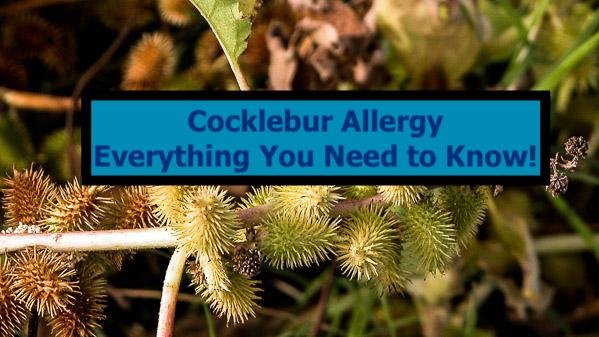Mulberry trees grace our world with their beauty and bounty: lush green leaves and plump, sweet fruits enjoyed for centuries. However, to some, mulberry allergy is what these seemingly innocuous trees can trigger. Mulberry allergies range from mild discomfort (tingling lips, itchy throat) to severe respiratory distress. This reaction can stem from two culprits: cross-reactivity with birch pollen proteins or proteins specific to mulberries.
This comprehensive exploration focuses on mulberry allergy, shedding light on its causes, symptoms, and effective management strategies. Understanding this complex condition allows you to navigate your environment confidently, even if mulberries are off-limits. We’ll explore avoidance strategies, medication options, future advancements in diagnostics, and potential hypoallergenic mulberries. So, whether you can indulge in the fruit or not, this article empowers you to appreciate the beauty of mulberries and take control of your health.
Mulberry Tree Allergies – Explained
Mulberries, borne of the Morus genus, are not just another fruit but a storied element of human agriculture, nutrition, and folklore. Found across temperate and subtropical regions around the globe, mulberry trees are resilient, offering more than just their sweet, sometimes tart, fruit. They have served as a staple in traditional medicine, a vital component in silk production, and a nutritional powerhouse in diets for centuries.

The Morus genus encompasses several species, with Morus alba, Morus nigra, and Morus rubra among the most commonly known. These trees yield fruit that varies in color from white and pink to deep purple, almost black, each type boasting its own unique flavor profile. Nutritionally, mulberries are a treasure trove of vitamins C and K, iron, potassium, fiber, and plant compounds like anthocyanins and resveratrol, which contribute to their antioxidant properties.
Benefits of Mulberry
Beyond the dinner table, mulberries have been used by health practitioners in various cultures for their benefit. In traditional Chinese medicine, different parts of the mulberry tree, including the leaves, roots, and fruit, have been used to treat many ailments, from improving vision to regulating blood sugar and enhancing immunity. Similarly, in other parts of the world, mulberries have been employed in folk remedies to treat everything from colds and flu to inflammation and even as a diuretic.
You May Also Like:
Mulberry Tree Allergy & Mulberry Pollen Allergy
Mulberry allergy, while not as widely recognized as other food or pollen allergies, presents a significant concern for those affected.
A mulberry allergy occurs when the immune system erroneously identifies proteins found in mulberry fruit or pollen as harmful, triggering an allergic reaction. This condition can manifest in two primary forms: an allergy to the fruit itself, often related to the proteins in mulberry berries, and an allergy to mulberry pollen, which is a concern mainly during the blooming season of mulberry trees.

The Immune Response to Mulberry Allergens
When an individual with a mulberry allergy encounters the fruit or pollen, their immune system launches an attack against the perceived threat, producing IgE antibodies. These antibodies bind to mast cells, leading to the release of histamine and other chemicals, which then cause the symptoms associated with allergic reactions.
Histamine’s release contributes to inflammation and the dilation of blood vessels, manifesting in various symptoms depending on the allergy type. In mulberry fruit allergies, the reaction is often immediate and localized to areas that came into direct contact with the allergen. In contrast, pollen allergies can provoke a broader, more systemic response due to inhaling allergens.
Evidence and Research
Research into mulberry allergies, particularly pollen allergies, has contributed to understanding these reactions. Studies have identified specific allergenic proteins in mulberry pollen, such as Mor n 1, which is a major allergen responsible for eliciting allergic responses in sensitized individuals. These findings are crucial for developing diagnostic tests and potential treatments.
However, the scientific exploration of mulberry fruit allergies is less extensive, with limited studies focusing on the identification of allergenic proteins within the fruit and their cross-reactivity with other known allergens. This gap highlights the need for further research to understand and effectively address mulberry allergies fully.
Mulberry Allergy Symptoms and Severity
Like other allergic reactions, mulberry allergies can manifest in a range of symptoms that vary in severity from person to person. Recognizing these symptoms is crucial for individuals to seek appropriate care and manage their condition effectively. This section outlines the common signs of mulberry allergies and the potential severity of these reactions.
Common Symptoms of Mulberry Allergies
- Mulberry Fruit Allergy Symptoms: Reactions to mulberry fruit often occur shortly after ingestion and can include oral allergy syndrome (itching or tingling in the mouth), gastrointestinal discomfort (nausea, vomiting, diarrhea), skin reactions (hives, eczema), and, in rare cases, anaphylaxis—a severe, life-threatening reaction that requires immediate medical attention.
- Mulberry Pollen Allergy Symptoms: Those allergic to mulberry pollen typically experience symptoms associated with allergic rhinitis, including sneezing, runny or congested nose, itchy and watery eyes, and coughing. Asthma symptoms may also be exacerbated during the mulberry blooming season, leading to increased wheezing and difficulty breathing.
Mulberry Fruit Allergies vs. Mulberry Pollen Allergies
- Mulberry Fruit Allergies: Allergic reactions to mulberry fruit are typically food allergies, involving symptoms that can range from oral allergy syndrome (characterized by itching or swelling in the mouth or throat upon consumption) to more systemic reactions, including hives, digestive distress and, in rare cases, anaphylaxis.
- Mulberry Pollen Allergies: Mulberry pollen allergies are classified as seasonal allergic rhinitis or hay fever. During the mulberry blooming period, individuals with this type of allergy may experience sneezing, nasal congestion, itchy eyes, and respiratory discomfort. Unlike fruit allergies, which are triggered by ingestion, pollen allergies result from inhaling airborne particles.
Severity of Reactions
The severity of allergic reactions to mulberries can range from mild discomfort to severe and potentially dangerous symptoms. Factors influencing the severity include:
- The amount of allergen exposure.
- The individual’s sensitivity level.
- The presence of coexisting allergies or asthma.
- Mild to Moderate Reactions: Most allergic reactions to mulberry are mild to moderate and can be managed with over-the-counter or prescription medications. These include antihistamines to relieve sneezing and itchiness or corticosteroids to reduce inflammation.
- Severe Reactions (Anaphylaxis): Although rare, anaphylaxis is a serious concern with food allergies, including allergies to mulberry fruit. Symptoms of anaphylaxis may include difficulty breathing, a rapid drop in blood pressure, dizziness, and loss of consciousness. Anaphylaxis requires immediate treatment with epinephrine (adrenaline) and emergency medical care.
Recognizing and Responding to Allergic Reactions
For individuals with known or suspected mulberry allergies, being able to recognize the early signs of an allergic reaction is essential. Quick response and appropriate treatment can mitigate the severity of symptoms and prevent complications.
- Emergency Preparedness: Those at risk for severe reactions should carry an epinephrine auto-injector (EpiPen) and wear medical identification that details their allergy. Educating family, friends, and coworkers on recognizing anaphylaxis and how to respond can also save lives.
- Consultation with Healthcare Providers: Regular check-ups with an allergist or healthcare provider are important for monitoring the allergy and updating the management plan. This may include adjustments to medication, dietary recommendations, and strategies for avoiding exposure to mulberry allergens.
Diagnosis of Mulberry Allergy
Accurately diagnosing a mulberry allergy is crucial for implementing effective management strategies and avoiding potential triggers. This process involves a combination of medical history review, symptom assessment, and specific diagnostic tests. Understanding these diagnostic steps can help individuals navigate their journey toward identifying and managing mulberry allergies.
Medical History and Symptom Assessment
The initial step in diagnosing a mulberry allergy involves a detailed discussion with a healthcare provider about the individual’s medical history and the symptoms experienced. Key points of focus include:
- The timing and context of symptoms: Identifying when symptoms occur and whether they are seasonal (suggesting a pollen allergy) or related to the consumption of mulberry fruit.
- Previous allergic reactions: A history of allergies to other foods or environmental factors can provide clues to potential cross-reactivity with mulberries.
- Family history of allergies: Knowing if immediate family members have allergies can indicate a genetic predisposition to allergic conditions.
Diagnostic Tests for Mulberry Allergy
Following the initial assessment, specific tests may be recommended to confirm the presence of an allergy to mulberries:
- Skin Prick Test (SPT): This test involves placing a small amount of mulberry extract on the skin, usually on the forearm or back, and then lightly pricking the skin so the extract enters just below the surface. A positive reaction, typically a raised bump surrounded by redness, indicates an allergic response to mulberries.
- Specific IgE Blood Test: An allergy blood test assesses the level of IgE antibodies in the blood in response to mulberry allergens. Elevated IgE levels suggest an allergy to mulberries or their pollen.
Challenges in Diagnosing Mulberry Allergy
Diagnosing mulberry allergy presents its own challenges, primarily due to its relative rarity and the potential for cross-reactivity with other allergens. Cross-reactivity occurs when proteins in mulberries resemble those in other allergenic substances, causing the immune system to react similarly. This can complicate the diagnosis, as it may be unclear whether symptoms are triggered by mulberries or another allergen.
Additionally, the availability of mulberry extracts for testing purposes may be limited, and not all testing centers have the capabilities to test specifically for mulberry allergy. In such cases, a detailed medical history and symptom assessment become even more critical in guiding the diagnosis.
Life After Diagnosis
Once a mulberry allergy is confirmed, the focus shifts to managing the allergy through avoidance strategies, symptom relief, and, if necessary, emergency preparedness for severe reactions. Regular follow-ups with an allergist or healthcare provider are essential to monitor the allergy and adjust the management plan as needed.

Management and Treatment
After a mulberry allergy has been diagnosed, creating an effective management and treatment plan is essential. This plan not only focuses on avoiding allergens but also on addressing symptoms when they occur. Here’s a comprehensive guide to managing and treating mulberry allergies, ensuring those affected can lead healthier, more comfortable lives.
Avoiding Mulberry Allergens
The cornerstone of managing a mulberry allergy, whether to the fruit or pollen, is avoiding the allergen. This can be challenging, particularly with pollen, which is airborne, but several strategies can help minimize exposure:
- For Mulberry Fruit Allergies:
- Be mindful of food labels and ingredients in processed foods, juices, or jams containing mulberry.
- Inform friends, family, and restaurants of your allergy to ensure meals prepared do not contain the allergen.
- For Mulberry Pollen Allergies:
- Check daily pollen counts and limit outdoor activities when they are high, typically in the early morning or late afternoon.
- Keep windows closed during the mulberry blooming season to prevent pollen from entering indoor spaces.
- Use air purifiers fitted with HEPA filters to reduce indoor pollen levels.
Symptom Relief
Despite best efforts to avoid allergens, exposure can still happen, leading to allergic reactions. Here are some ways to alleviate symptoms:
- Antihistamines: These medications can help relieve sneezing, itching, and runny nose by blocking the action of histamine, a chemical involved in allergic reactions.
- Nasal Corticosteroids: Sprays that reduce nasal passages’ inflammation, relieve congestion, and improve breathing.
- Eye Drops: Formulated to ease itchy, watery eyes caused by allergies.
In cases of food allergies, including mulberry fruit, having access to emergency medication such as an epinephrine auto-injector (EpiPen) is critical for responding to severe reactions like anaphylaxis.
Allergen Immunotherapy
For those with severe mulberry pollen allergies, allergen immunotherapy, also known as allergy shots, may be recommended. This treatment involves regular injections of small amounts of the allergen, gradually increasing to build tolerance and reduce sensitivity. It’s a long-term commitment but can significantly decrease symptoms and medication dependence over time.
Lifestyle Adjustments and Support
Living with a mulberry allergy necessitates certain lifestyle adjustments, but support from healthcare providers, community resources, and patient advocacy groups can make navigation easier:
- Educational Resources: Leverage reputable sources to educate yourself and your loved ones about mulberry allergies, recognize symptoms, and emergency procedures.
- Support Networks: Connect with others with similar allergies through online forums or local support groups for shared experiences and tips.
- Professional Guidance: Regular consultations with an allergist or healthcare provider are essential to adjust treatment plans, explore new therapies, and ensure overall well-being.
Conclusion – Mulberry Allergies
Navigating the complexities of mulberry allergy is a journey of vigilance, adaptation, and education. Each step requires care and attention, from the initial realization of symptoms to the detailed diagnosis process and ongoing management and treatment. Yet, armed with knowledge and the right strategies, individuals facing mulberry allergies can manage their condition effectively, reducing the impact on their daily lives and well-being.
The exploration of mulberry allergies—from understanding the nature of the allergy to implementing management strategies—highlights the importance of a proactive and informed approach. By avoiding known triggers, whether it’s the fruit or pollen, and by having a plan in place for dealing with exposure, those affected can navigate their world with greater confidence and less fear.
In conclusion, while mulberry allergy presents its unique challenges, it also allows individuals to engage deeply with their health and environment. Through careful management, ongoing education, and support, living with a mulberry allergy becomes not just about navigating limitations but about embracing a lifestyle that prioritizes health, awareness, and resilience. Like any journey, the journey with mulberry allergy is continuous and evolving. Still, with the right tools and support, it can be navigated successfully, leading to a fulfilling and symptom-reduced life.
FAQs on Mulberry Allergy
1. What exactly causes a mulberry allergy?
A mulberry allergy is caused by an overreaction of the immune system to proteins found in mulberry fruit or pollen. The body mistakenly identifies these proteins as harmful, triggering an allergic response.
2. How common are mulberry allergies?
Mulberry allergies are relatively rare compared to other fruit or pollen allergies. However, they can be significant for those affected, especially in areas where mulberry trees are prevalent.
3. Can you be allergic to both mulberry fruit and pollen?
Yes, it’s possible to be allergic to both mulberry fruit and pollen, though some individuals may react only to the fruit or the pollen. The specific proteins responsible for allergies in fruit and pollen may differ.
4. What are the symptoms of a mulberry allergy?
Symptoms can range from mild to severe and may include itching or tingling in the mouth (for fruit allergies), sneezing, runny or congested nose, itchy and watery eyes (for pollen allergies), skin rashes, gastrointestinal discomfort, and, in rare cases, anaphylaxis.
5. How can I find out if I’m allergic to mulberries?
Diagnosis involves a combination of reviewing your medical history, assessing symptoms, and conducting specific tests, such as skin prick tests or blood tests for IgE antibodies related to mulberry allergens.
6. What should I do if I have a mulberry allergy?
Management involves avoiding mulberry fruit or limiting exposure to mulberry pollen, depending on the allergy type. Treatment for symptoms may include antihistamines, nasal corticosteroids, or, in severe cases, carrying an epinephrine auto-injector for emergencies.
7. Are there any treatments available for mulberry allergy?
While there’s no cure for allergies, symptoms can be managed with medication and avoidance strategies. For pollen allergies, allergen immunotherapy may be an option to reduce sensitivity over time.
8. Can mulberry allergies be prevented?
Preventing an allergic reaction to mulberries involves avoiding the fruit or reducing exposure to pollen. Staying informed about pollen counts and implementing strategies to minimize indoor pollen can help prevent allergic reactions.
9. Do mulberry allergies change over time?
Allergies can change over time, with symptoms becoming more or less severe. Regular follow-ups with a healthcare provider can help monitor any changes in your allergy status.
10. Where can I get more information about managing mulberry allergies?
For more information, consult an allergist or healthcare provider. Reputable websites and patient advocacy groups focused on allergies can also be valuable resources for education and support.


